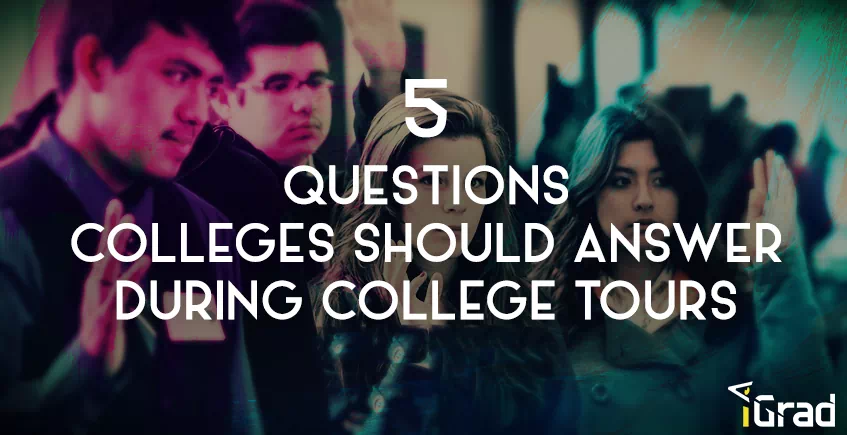Image Courtesy of: COD Newsroom
College campus tours can (and should) provide students with an incredible amount of insight into which school may be best suited for their specific needs and wants. All too often, however, this important aspect of selecting a college is not as beneficial as it should be—students are not receiving important information directly related to their future success. Instead of being proactive in providing information on graduation rates, career preparation tools, and other meaningful resources, schools either let students lead the charge in asking questions or only provide information pertaining to what they assume students want to know. To ensure students receive information that is vital to their long-term success, colleges need to answer the following questions that shed light on how the school is prepared to help them reach that goal.
What kind of financial aid assistance or counseling is available to students?
One of the greatest concerns for students currently selecting a school is how they will pay for their education. Although the majority of students (and parents) may be wondering how the school is able to help in the search for education funding, many will not ask. Colleges, then, need to be active in talking about what resources are available to students, whether that includes hands-on assistance with completing the FAFSA or help in searching for and completing scholarship applications. Colleges can lessen the heavy burden of student loans and poor financial decisions made by students during their time in school, as well as regulate their own 90/10 rule. Whatever your school offers, students will feel more comfortable knowing that their school of choice is ready and able to lend a hand in finding and securing money for their education, preparing them for a less stressful post-graduation career.
Why College Students Dropout and What Some Schools Are Doing To Fix It
What is the average amount of student loan debt for graduates?
With the steady increases in tuition rates and overall education costs, borrowing for education has become commonplace for most students. Unfortunately, without proper coaching and financial literacy guidance early in their college careers, students may take on far more than they need and ultimately, more than they can easily pay back upon graduation. To help ease students’ concerns regarding student loan debt, it may be beneficial to share the average loan amount for graduating students. The more students are armed with financial information prior to starting school, the better off they will be. With responsible borrowing, students are able to focus on doing well in their selected career instead of being bogged down by burdensome repayment terms on high student loan balances.
What career resources are available to students before and after graduation?
Students who have yet to step foot into their first college course are hardly thinking of their need for career help down the road. However, the intent of college is to provide both the education and character building experience students need to be successful throughout their working lives. Students should know if career preparation resources exist, including assistance with drafting cover letters or resumes, providing guidance on how and when to network, or building presentation skills to the availability of a dedicated internship department. Colleges have an excellent opportunity during tours to get students thinking about their future career early on.
ARE YOU INTERESTED IN BRINGING A FINANCIAL WELLNESS PROGRAM TO YOUR SCHOOL? SCHEDULE A DEMO!
Are there on-campus work opportunities?
Although earning a degree is the prevailing metric of a student’s success, coursework is far from the only defining factor in a meaningful college career. Work experience throughout college is not merely a suggestion; it is becoming more of a necessity in order to set students apart from their peers when it comes to finding a job. Additionally, students who work are not only priming their resume for future employers, they are also more likely to borrow less for their education. Even though students may not be asking what work opportunities are available either on campus or in close proximity to the school, colleges should not hesitate to provide this information during a tour.
What is the school’s graduation rate?
Students visiting a campus for a college tour may not be all that interested in the school’s statistics; however, certain metrics provide clear insight into a school’s commitment to student success. The graduation rate for any college is a direct measurement of its dedication to its students for the long-term, and as such, it is necessary to provide this information, even if students do not ask the question themselves. A high graduation rate can be a clear indicator that your school is equipped to help students get across the finish line successfully and should be shared with prospective students proudly.
Selecting a college can be a tedious task for students, but schools can make the decision less daunting by being proactive in providing information. Although they may not know it, understanding the financial aid assistance available, career resources in place as well as graduation rate and work opportunities on campus can be invaluable to students. Colleges have an opportunity to showcase how dedicated they are to students’ long-term success by answering these important questions—even when they aren’t being asked.








